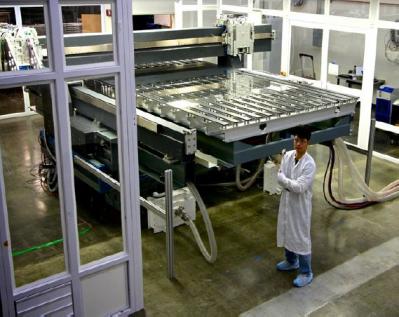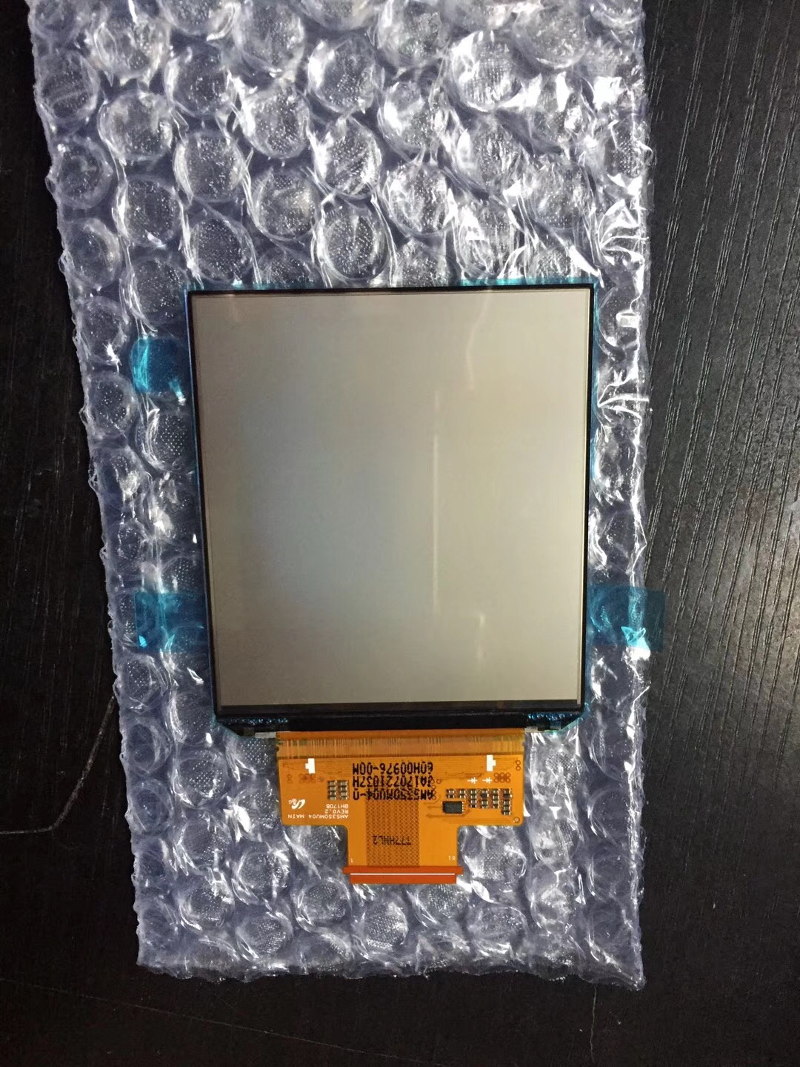UBI sees AMOLED production capacity growing at a 48% CAGR from 2018 to 2020
UBI Research estimates that the global AMOLED production capacity will grow at a CAGR of 48% from 2018 to 2020. Overall production size will grow from 13 million square meters in 2017 to 40 million square meters in 2020.

Small and medium-sized displays will continue to lead the AMOLED market, with 32 million square meters in 2020 (compared to 8.4 million in 2020). Samsung Display will continue to dominate but its market share will drop to around 45% in 2020 (down from around 90% in 2017).
Samsung is reconsidering its A5 flexible OLED fab, fears lower smartphone display demand
According to reports from Korea, Samsung Display is reconsidering its planned investment in its A5 flexible OLED production line, due to "growing uncertainties in the smartphone market". Samsung reportedly suspended its equipment orders and its plans to construct the A5 building.

There are several worrying signals in the smartphone industry. Apple is reportedly facing lower than expected demand for its iPhone X (and may halt new OLED orders for its flagship phone in 2018). Smartphone shipments in China decreased 3.1% in Q3 2017 and it is estimated that Q4 have been lower than expected as well.
DSCC: OLED equipment spending reached a record $15.5 billion in 2017
Display Analysts from DSCC says that 2017 was a record year for the display equipment market, with revenues reaching a record $24.7 billion (up 30% from 2016). OLED spending reached a record $15.5 billion - a 143% increase over 2016. Samsung's share of the OLED equipment market was 48%, followed by BOE with $24% (following a 229% growth from 2016).

OLED equipment revenues represents 63% of the entire display equipment market, surpassing LCD - which saw revenues dropping 27% from 2016. In 2018 DSCC sees the equipment market falling 9%, although booking will increase as growth will resume in 2019. The main reason behind the decline in 2018 is due to Samsung which will reduce its equipment orders by 64% in 2018. 2018 is expected to be the first year where China leads in OLED spending with a 64% to 36% advantage over Korea.
OLED Ink-jet printing market situation, early 2018
Many OLED producers believe that Ink-Jet printing of OLED emissive materials is the best way to achieve lower-cost OLED TV production, and to enable OLEDs to compete in the medium part of the TV market. Ink-Jet printing is an efficient process (less material waste compared to evaporation) and it can be very quick as well. The main drawbacks of inkjet are the limited resolution and the need for soluble emissive materials which are less efficient compared to evaporation ones.

A Kateeva OLED ink-jet printing system
These challenges are being overcome, and it seems that at least four groups (in Korea, Japan and China) are charging forward towards mass production of ink-jet printed OLEDs. Ink-jet printer makers and soluble material suppliers are also optimistic ink-jet printing commercialization will soon be here as the material performance gap is diminishing.
Samsung's Harman demonstrates new car display concepts using SDC's OLED and QLED displays
Automotive component maker Harman (owned by Samsung) is demonstrating new automotive display prototypes and designs that make use of Samsung's latest displays - both OLEDs and QLEDs.

The new automotive designs includes Samsung's latest flexible and transparent OLED displays, and Harman hopes that these new designs will bring more choice and flexibility to auto makers. Harman displayed two different car concepts which you can see above and below. In these concepts the OLEDs are used for the instrument cluster and other parts of the car, while the QLED panels are used for the infotainment system.
Reports suggest Samsung will start production of its 7.3-inch foldable smartphone in November 2018
Samsung has been developing foldable display technologies for a long time, and it seems that a foldable phone/tablet is always just around the corner. In September 2017 Samsung's Mobile Business group President says that it hopes to have a foldable phone in the market in 2018, and according to new reports from Korea Samsung is now expected to start production in November 2018. The phone will have a 7.3-inch display that folds inside.
 2014 foldable phone concept
2014 foldable phone concept
The Korea Herald reports that the foldable phone will be introduced in December 2018 or early next year. Samsung Electronics already finished the phone's design and specification, and Samsung Display is expected to complete the display development by March 2018. The actual panel production will commence in September 2018.
Samsung unveils its first Micro-LED TV, hoping to compete with LG's OLEDs
Samsung unveiled its first Micro-LED TV at CES, aptly named "The Wall". This is a 146-inch tiled 4K display that is almost 8 times larger than a 55" TV in area. We don't have any technical details yet on this display, but according to reporters at CES you cannot see the seams of the individual tiles.

Samsung says that this display will ship in 2018 - but it did not reveal the price or expected release date. It's also not clear whether you will be able to actually customize this display with smaller and/or larger sizes.
Apple's iPhone wins burn-in test over Samsung's flagship OLED phones
Korea's Cetizen posted an interesting review of the burn-in of 3 flagship OLED phones, the iPhone X, the S7 Edge and the Note 8. Cetizen displayed the same image on all three phones for 510 hours (!) at full brightness.

As you can see in the image above, the Note 8 has very visible burn-in, while the two other phones perform better. Cetizen say that the iPhone has the best display in that regard. Apple did in fact confirm that the iPhone X suffers from burn in, but also said that it engineered the display to be the best in the industry in reducing the effect of OLED burn-in, though - and apparently this engineering works.
SDC launches 3.5" QHD VR AMOLEDs (615 PPI)
Samsung Display released a new VR AMOLED display, a 3.5" QHD (1440x1600) panel - with a very high density, 615 PPI. Click here for more information on this new panel.

Let us know if you are interested in obtaining SDC's latest VR AMOLED panel, or browse for other OLEDs at our extensive OLED catalog.
CLSA: Samsung's OLED production will grow 26% in 2018 to reach 570 million units
CLSA estimates that in 2017 Samsung Display produced 450 million OLED displays, and this will grow 26% in 2018 to reach 570 million units. Samsung's current capacity for flexible OLEDs is about 330-385.

Looking at the OLED TV market, CLSA expects it to continue its fast growth. Global OLED TV shipments will grow to 2.7 million units in 2018 (up from 1.6 million in 2017). LG Display is said to shift its focus to larger panel production (65-inch and 77-inch) so this may effect the number of panels produced.
Pagination
- Previous page
- Page 58
- Next page

